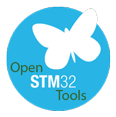STM32 products are nothing but problems ... ;(
Hello,
recently I moved from 8 bit AVRs to STM32 mainly for 32 bits MCU. STM32 official tools seemingly looks nice and solid at first but as it turns out they are cripples. CubeMX idea is great but this tool doesn’t work well. I opened CubeMX, selected correct MCU and generated code - it was simple and took less than a minute, so far so good. Then I opened SW4STM32, imported that Cube project (as shown here: http://www.openstm32.org/Importing+a+STCubeMX+generated+project)![]() , built project, and... 25 Errors! Example errors:
, built project, and... 25 Errors! Example errors:
Description Resource Path Location Type
Type ‘__HAL_PWR_VOLTAGESCALING_CONFIG(PWR_REGULATOR_VOLTAGE_SCALE3)’ could not be resolved main.c
Description Resource Path Location Type
Type ‘__PWR_CLK_ENABLE()’ could not be resolved main.c /lol/Application/User line 101 Semantic Error
Description Resource Path Location Type
Type ‘RCC_SYSCLK_DIV1’ could not be resolved main.c /lol/Application/User line 114 Semantic Error
all of them are “Something could not be resolved”.
Well, what is wrong ? I haven’t mention many other problems with these tool because they are secondary in comoarsion to “could not be resolved” problems.


